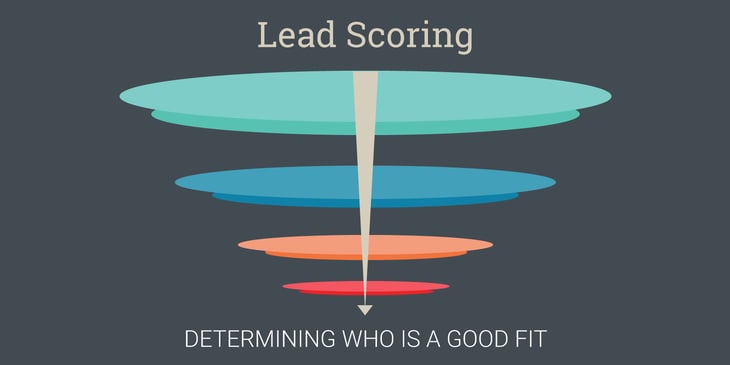
When you work so hard to bring in leads, it's difficult to turn any of them away. After all the energy put into getting them there, you want them to stay and become a customer. However, as you wise business people know, you need the right leads for a successful sale. If your marketing team sends every Tom, Dick and Harry off to sales, it's unlikely they'll have the budget, the appropriate needs and/or the personality type that works well with your business. At the end of the day, you'll be spending valuable time on the wrong audience.
Head of Sales, Jenna, works with me (as the VP of Marketing) on this conflict daily. Luckily for you, we pulled together our strategy into a guide. Walk through our exercise below and download the PDF to fill out and share with your marketing and sales team.
Download your PDF version here »
Lead Scoring & Grading—Quick Guide
Why Score Leads?
- Align sales and marketing campaigns and goals.
- Determine what leads are the highest priority.
- Automate process.
What is Lead Scoring?
Lead scoring and grading is a custom blend of behavioral (implicit criteria) and demographic (explicit criteria) that shows the leads most likely to close.
Behaviors / Implicit Signals
Scoring leads is based on their behavior and interactions with your brand.
- Number of pageviews
- Pages per session
- Engagement with your content - downloads, clicks
- Form submissions
- Email
Behavior
|
Points Earned*
|
| Submit a contact form |
3 |
| Newsletter signups |
1 |
| Send an email |
3 |
| Register for an event |
3 |
| Search site |
1 |
| Donate / Purchase |
5 |
| Social shares |
1 |
| Download content - annual report |
2 |
*Negative interactions can also reduce points. For example, if someone unsubscribes to your newsletter, you can assume that they are no longer interested in your content.
Demographics / Explicit Signals
Grading leads is based on what you identify as your ideal audience persona.
- Job role / title
- Location
- Industry
- Role
- Company
All leads start out with an average “C” grade. Their grades move up or down depending on how their explicit signals align with your ideal persona. Leads with better grades get higher priority.
Audience personas inform how you blend your scoring and grading. This should be highly customized. Your scoring and grading should be determined by your sales and marketing teams. Both teams play important parts in the process. For example, your sales team will determine when a lead is sales-ready. While your marketing team will identify leads that need to be nurtured before going to sales.
Do better leads…
- Closely align with your ideal persona?
- Need to be from a specific location?
- Have the authority to make the buying decision?
- Interact in a way that suggests the lead is engaged with your brand?
- Take part in the type of activities that suggests they are closer to converting?
Behavior
|
Points Earned
|
| Title |
|
| Role |
|
| Industry |
|
| Location |
|
| Decision maker |
|
| Social participation and habits |
|
| Career interests |
|
Lead Scoring and Grading Example
Qualifiers
|
Excellent Prospect - Sales Ready
|
Score
|
Poor Prospect
|
Score
|
| Job Title |
CEO mid-sized company |
+5 |
Student |
-10 |
| Location |
California |
+5 |
Ukraine |
-5 |
| Budget |
> $25,000 |
+5 |
< $10,000 |
-10 |
| Decision Maker |
Yes |
+5 |
No |
-5 |
| Recent Activities |
Subscribed
eBook DL
Watched webinar
|
+3
+3
+5
|
Whitepaper DL
Attended event
Visited jobs page
|
+3
+5
-3
|
| Lead Score |
Good Lead |
31 |
Poor Lead |
-25 |
Download your PDF version here »